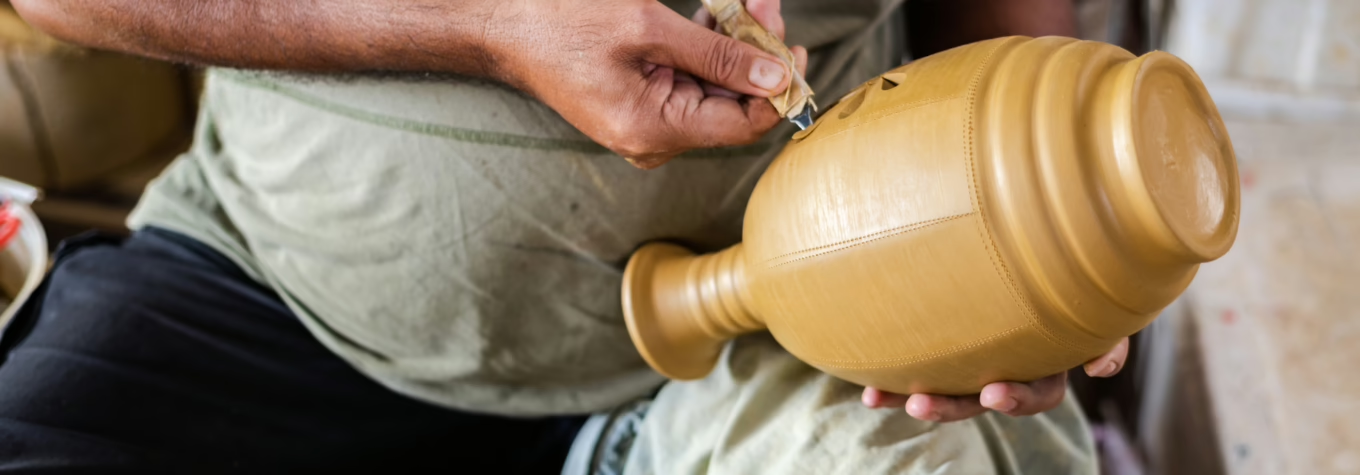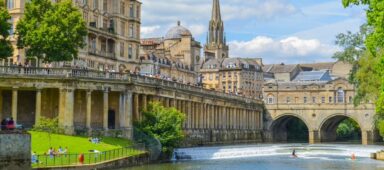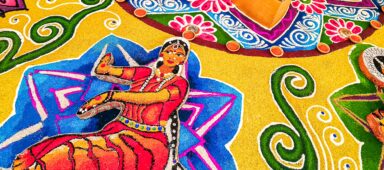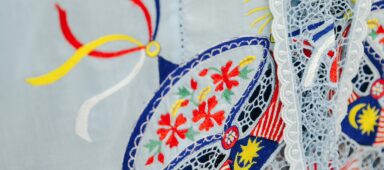Just outside the town of Kuala Kangsar in northern Perak state lies Sayong, where a curious cottage industry has survived for more than 300 years. This is the birthplace of the ‘labu sayong’, a traditional water pitcher specifically moulded from the earth
Labu sayong is typically made to store water, either in the kitchen or for daily use. Given its slightly porous nature that cools any water it contains, villagers believe that drinking from it has health benefits. Most people mistake any odd gourd-shaped vessel as labu sayong, when the most telling characteristic of the traditional craft is its colour.
“It happens that the geography here consists of paddy fields. When rice husk is thrown away and left in the soil, the pottery burned on it will become black, shiny and hard,” explains Zulkifly Amir bin Hashim, who owns a labu sayong and ceramic enterprise in Kuala Kangsar.
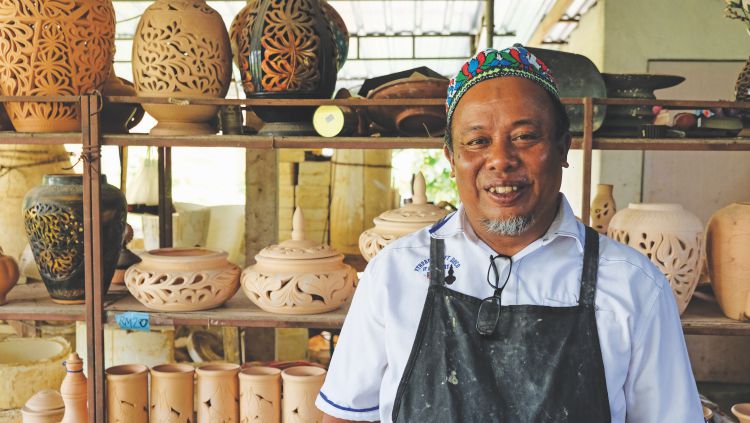
The forefather of ceramics
Zulkifly’s knowledge of labu sayong was inherited from his grandmother. Despite studying engineering in Japan, he eventually started a family in his hometown, moulding a career out of an old tradition. In 2009, he turned it into a full-time business, with two full-time staff and several part-timers.
“The craft industry had become developed then. So we thought we should also go into it. The basics are there, the raw materials are there, and there are still many practising craftsmen in Sayong.”
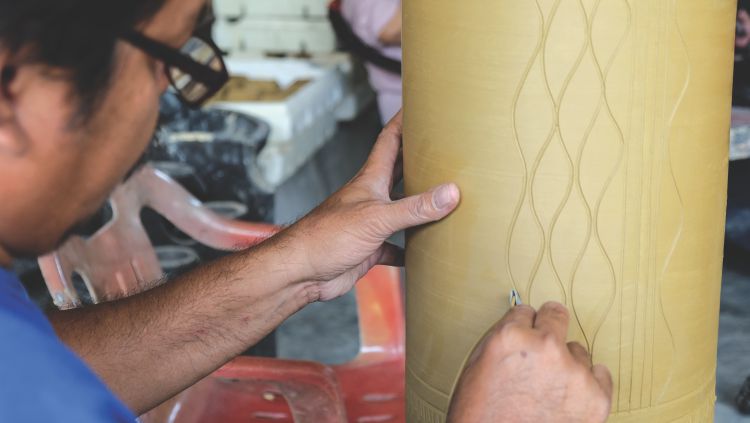
It is no surprise that labu sayong is the forefather of ceramic production in Sayong, now one of the largest in Malaysia. There are more than 50 ceramic enterprises in the area that have since developed innovative ways to increase yield. Only five still produce labu sayong by hand on the side.
To do so, Zulkifly enlists the help of makciks like Kak Marjenah, who specialises in moulding pottery by hand, on a thrower’s wheel. She also gives demonstrations and lessons whenever there is a request for lessons.
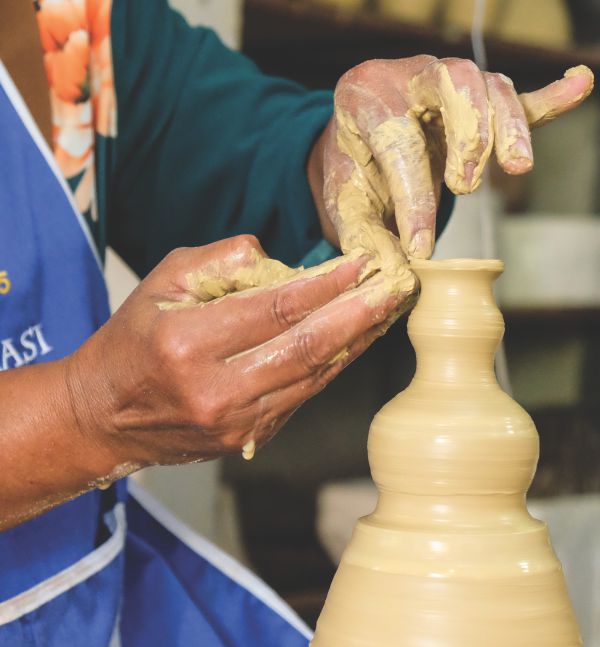
Forged in fire
Back in the day, the clay would be arranged on firewood and fired for several hours until it reaches a peak temperature of 800°C. Skilled potters use their instincts to determine when it is ready. Fresh from the fire, it would then be rolled in rice husks to give it that signature ebony colour. Traditional techniques add to its durability and give the craftsmen more control over the design. However, the turnaround time is much higher, and it is at the mercy of the weather.
These days, the water pitcher can be made by the hundreds using moulds, then trimmed and coloured for decorative purposes. While some still use labu sayong to store water, many prefer to display the handicraft at home. According to Zulkifly, traditional labu sayong can be sold for about RM20-RM25 (USD4.80-USD6). Those made on a larger scale using modern methods go for between RM15-RM18 (USD3.60-USD4.30).
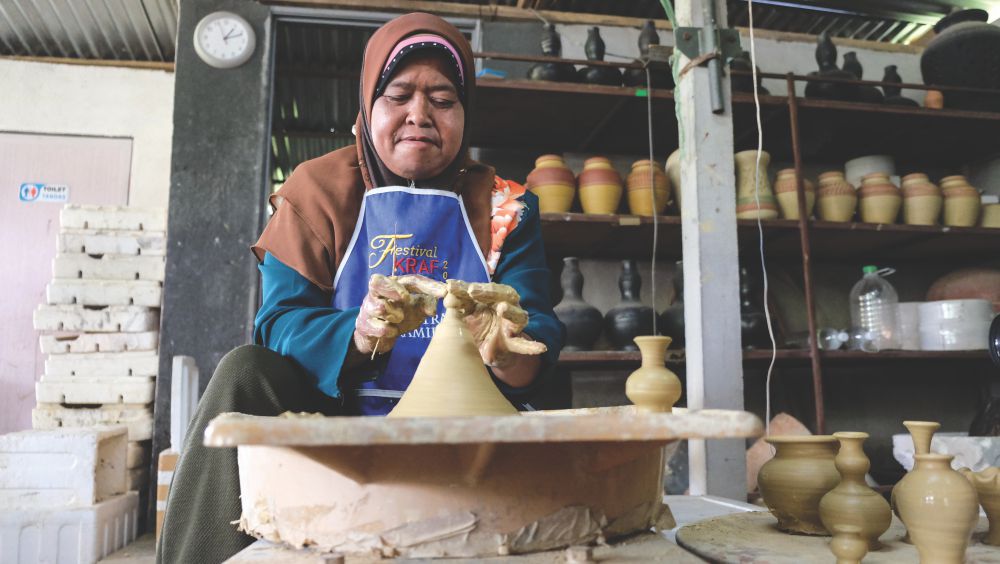
He shares that the greatest challenge is public awareness and publicity. Modern ceramics or Chinese porcelains are glazed for an attractive, glass-like quality. The ceramics in Kuala Kangsar remain down to earth, as it were, in their appearance. To overcome this, he welcomes people to learn about the craft and try it for themselves in his workshop.
He is hopeful that as the craft industry evolves, more people will become aware of Sayong’s flourishing ceramic culture. There is still a place in Malaysia for this icon of Perak.
For information on Zulkifly’s workshops, book a session on LokaLocal.
